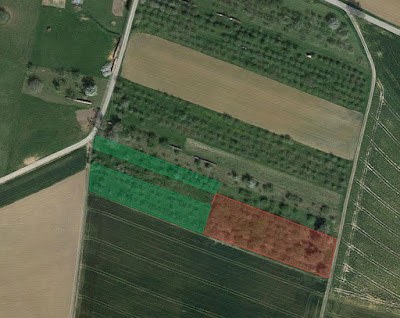This new plot has not been looked after for quite some time. The trees are often too close together, and in summer, the canopy is almost unbroken even between rows. Very overgrown, and what I kept describing as like something out of Middle Earth. My original negative decision was based on the amount of work our existing orchard already needs. Although it was better cared for, I still have a lot of cutting to do to rejuvenate, or open up most of the trees, and the thoughts of taking on another 90 or 100 trees was a bit overwhelming. Until I strolled through...
The man selling it got my number from my friend, and called me to ask if I was interested, and I told him we'd think about it over the weekend. Which I did, to a rather extreme level. My poor wife was sick of me running through scenarios, and pointed out that we wouldn't have to do anything if we owned it. There's no commercial pressure, just a hobby, and to be honest, part of the appeal was to try and preserve this as an orchard, as it borders onto tillage, and other sections of the overall orchard have been felled and sown with crops instead (see the treeless strips in the aerial image below).
So, the decision was made. We agreed a fair price, and today the legal contracts were signed, so we are now formally the owners. This now doubles our overall orchard size to over 6000 square metres (1.5 acres), which is rather daunting as a hobby!
 |
| Green areas are what we've owned till now. Today we added the red area. |
Originally, the ends of every row had cherry trees, which our current plot is missing, so we will gain, I think, 5 very large cherry trees. Inside the cherry trees, each row then had a few pear trees, and this is repeated a thee ends of the rows we are purchasing. Mostly they seem to be conference, mirroring the ends of the current rows, but there are a few other varieties, like Bürgermeisterbirne/Köstliche aus Charneux, and I hope some perry pear trees and more Williams Christ.
We will have our work cut out, and probably need to take some drastic measure to open the plot up, for the sake of the trees. Personally, I'd also like to get in a full row of classic English and French cider apples, but let's see how it all develops. I'm probably nuts...



















